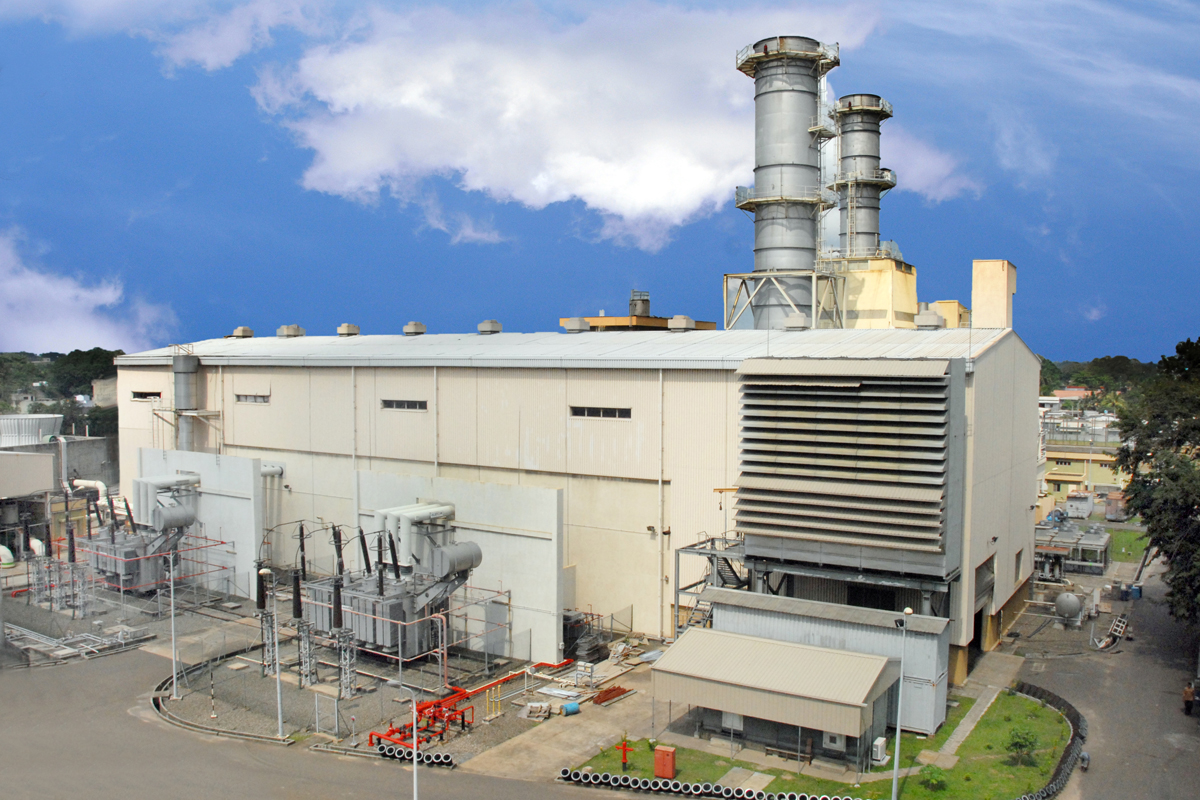
The primary energy options that are being employed in Sri Lanka in the generation of electricity are hydro power, Coal power and fossil fuel based thermal power such as gas turbines, steam turbines, combined cycle plants and diesel engines. The demand for electrical power in Sri Lanka has been growing at an average annual rate of about 7% over the last two decades.
In order to meet the ever-growing power demand as a result of the rapid socio-economic development of the country, the Sri Lanka Government decided to build a 165 MW Combined Cycle Power plant on the vacant land adjoining the existing Kelanitissa Power Station in year
2000.
The combined cycle power plant was built at a total cost of Rs.10.616 Million of which Rs.9, 200 Million (JY 13,481 Million) was obtained from the Government of Japan, though Japan Banking International Corporation (JBIC)as a soft loan while the remainder was borne by Ceylon Electricity Board (CEB).
The Engineering Consultancy Services were provided by Lahmeyer International of Germany and Chuo Kaihatsu Corporation of Japan, two highly renowned engineering consultancy firms. The CEB engineers worked as counterparts to the consultants in fulfilling the engineering Consultancy aspect of the project. The turnkey project contract was awarded to a consortium of Marubeni Corporation of Japan and Alstom power Centralles of France.
Today we achieve the successful completion of the Kelanitissa Combine Cycle Power Project with state-of-the-art technology as a result of diligent efforts of many dedicated individuals and organizations.
 |
 |
|---|
Front view of kccp
This plant has the flexibility of operating on naphtha fuel which is a by-product of the petroleum refinery, and on Diesel oil as an alternative fuel.
The cost per unit generated by this plant is approximately Rs.18 per kWh, based on the current fuel prices and is the one of lowest thermal generating plant (thermal Complex) in the country at present and only thermal plant that capable of operating as a system frequency control machine when needed.
The commissioning of this low operating cost thermal power plant will further help to ease the power situation in the imbalance of hydro to thermal power generation. This power plant will enhance the much-needed electricity, which is a key factor of economic development in the country.
The Kelanitissa combined cycle power plant consists of a 110 MW Gas Turbine and a 55 Mw steam Turbine combined to operate simultaneously to generate 165 MW of electricity.

The thermal energy dissipated in firing the combustors of the gas turbine is converted to mechanical energy rotating the gas turbine and in turn the directly coupled generator produces electrical energy. In addition to this energy output, the waste heat energy in the exhaust gases of the gas turbine is recovered by directing the exhaust gases to flow through a heat recovery steam generator. (HRSG), which in turn produces superheated steam that drivers a high-pressure steam turbine and a low-pressure steam turbine. The mechanical energy produced by the steam turbine is converted to Electrical energy in another generator coupled in between the two steam turbines.
 |
 |
|---|
Gas turbine & generator compartment
 |
 |
|---|
Steam turbine and generator
 |
 |
|---|---|
Cooling tower |
Transformers |
 |
|---|
Heat recovery steam generator |
This power plant also has state-of the art control system incorporating a user friendly Programmable Logic Controller (PLC) based Distributed Control System (DCS).This provides modern and efficient automation of the operations with continuous process monitoring of plant and equipment to optimize safety, efficiency and reliability with minimum staff. The emission on the exhaust gases is also continuously monitored automatically.
 |
|---|
Distributed control system (DCS) room |
The combined cycle power plant achieves a thermal efficiency above 47% and delivers about 1084 GWh to the national grid annually.
The salient feature of this plant being, the water required for cooling purposes is sourced from the Kelani River and treated to the required quality by a high-tech water purification and treatment plant.
 |
 |
|---|
Water treatment plan
The environmental air pollution of this power plant is minimal since the Sulphur content of Naptha fuel is negligible and thus the emission due to Sulphur Oxides (Sox) is extremely low. Also emissions due to Nitrous Gases (Nox) are controlled to the bare minimum with appropriate technology.
| • FUNDING | JBIC Commitment J¥ 13,481 Million CEB Commitment Rs. 1,416 Million |
|---|---|
| • CONSULTANTS | Lahmeyer International ,Germany Chuo Kaihatsu Corporation, Japan |
| • CONTRACTORS | Marubeni Corporation, Japan Alstom Power Centralles , France |
| • CONTRACT SIGNED | 03rd May 2000 |
| • WORK COMMENCED | 04th August 2000 |
| • COMMERCIAL OPERATION | Simple Cycle 19th January 2002 Combined Cycle 27th March,2003 |
 |
 |
|---|